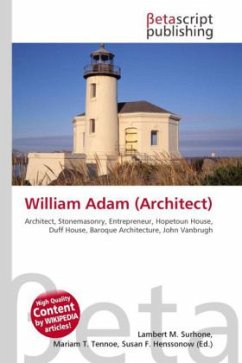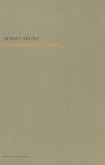Please note that the content of this book primarily consists of articles available from Wikipedia or other free sources online. William Adam (1689 24 June 1748) was a Scottish architect, mason, and entrepreneur. He was the foremost architect of his time in Scotland, designing and building numerous country houses and public buildings, and often acting as contractor as well as architect. Among his best known works are Hopetoun House near Edinburgh, and Duff House in Banff. His individual, exuberant style built on the Palladian style, but with Baroque details inspired by Vanbrugh and Continental architecture. In the 18th century, Adam was considered Scotland''s "Universal Architect". However, since the early 20th century, architectural critics have taken a more measured view, Colin McWilliam for instance finding the quality of his work "varied to an extreme degree". As well as being an architect, Adam was involved in several industrial ventures and improvement schemes, including coal mining, salt panning, stone quarries and mills. From 1731 he built up his own estate in Kinross-shire, which he named Blair Adam. He was the father of three architects; John, Robert and James, the last two were the developers of the "Adam style".
Bitte wählen Sie Ihr Anliegen aus.
Rechnungen
Retourenschein anfordern
Bestellstatus
Storno








